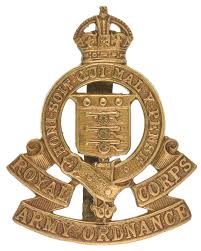Personal Details
Born: 17 April 1893 in Fenns Bank, Bronington, Flintshire, Wales and baptised 16 May 1893 at Bronington Parish Church.
Family: He was the son of Mary Ann Clive. He married Dorothy Kilgariff in 1922 in Whitchurch, Shropshire. The couple had one child, Irene S, born 1925.
Residence: In 1901 he was living with his grandmother at Brook Cottage, Bridgewater Street, Whitchurch. By 1911 his family had moved to 2 Blanton’s Yard, Green End, Whitchurch. At the time of his Attestation in 1915 his address was 60 Oddfellows Terrace, Whitchurch; military records show his address in the 1920s as 60 West End, Whitchurch (which is likely to be the same residence). In 1939 he lived with his wife and daughter at 30 Wayland Road, Whitchurch. This continued to be his home until his death in 1948.
Employment: In 1911 he was a labourer in an iron foundry. By 1939 he was an artesian well borer.
Died: 1948 in Shrewsbury, Shropshire and buried 2 December 1948 in Whitchurch Cemetery, aged 55.
Military Details
Regiment: Royal Army Ordnance Corps
Rank: Private
Service Number: 06589
Date of Enlistment: 22 April 1915
Date of Discharge: 19 March 1919
Reason for Discharge: Demobilisation
Other Information: Albert served in France and Egypt.
Albert was awarded the Campaign Medals (1915 Star, British war medal and Victory medal)

The 1914 Star (also known as 'Pip') was authorised under Special Army Order no. 350 in November 1917 and by an Admiralty Fleet Order in 1918, for award to officers and men of the British and Indian Expeditionary Forces who served in France or Belgium between 5 August and midnight of 22–23 November 1914. The former date is the day after Britain's declaration of war against the Central Powers, and the closing date marks the end of the First Battle of Ypres.
The 1914–15 Star (also known as 'Pip') was instituted in December 1918 and was awarded to officers and men of British and Imperial forces who served against the Central European Powers in any theatre of the Great War between 5 August 1914 and 31 December 1915. The period of eligibility was prior to the introduction of the Military Service Act 1916, which instituted conscription in Britain.
The British War Medal (also known as 'Squeak') was a silver or bronze medal awarded to officers and men of the British and Imperial Forces who either entered a theatre of war or entered service overseas between 5th August 1914 and 11th November 1918 inclusive. This was later extended to services in Russia, Siberia and some other areas in 1919 and 1920. Approximately 6.5 million British War Medals were issued. Approximately 6.4 million of these were the silver versions of this medal. Around 110,000 of a bronze version were issued mainly to Chinese, Maltese and Indian Labour Corps. The front (obv or obverse) of the medal depicts the head of George V. The recipient's service number, rank, name and unit was impressed on the rim.
The Allied Victory Medal (also known as 'Wilfred') was issued by each of the allies. It was decided that each of the allies should each issue their own bronze victory medal with a similar design, similar equivalent wording and identical ribbon. The British medal was designed by W. McMillan. The front depicts a winged classical figure representing victory. Approximately 5.7 million victory medals were issued. Interestingly, eligibility for this medal was more restrictive and not everyone who received the British War Medal ('Squeak') also received the Victory Medal ('Wilfred'). However, in general, all recipients of 'Wilfred' also received 'Squeak' and all recipients of The 1914 Star or The 1914/1915 Star (also known as 'Pip') also received both 'Squeak' and 'Wilfred'. The recipient's service number, rank, name and unit was impressed on the rim.

